A BIRTHDAY TRIBUTE: Kirby maven FRED VAN LENTE gives just due to The Demon, Kamandi and MORE…
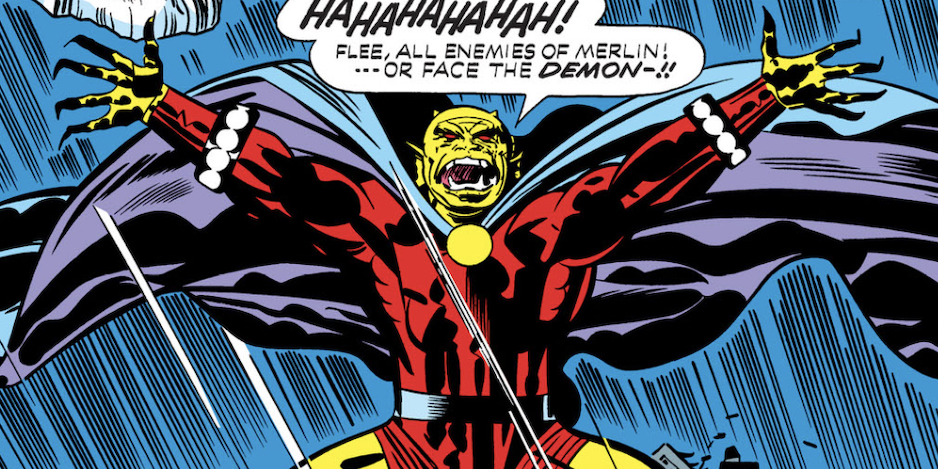
By FRED VAN LENTE
Happy birthday to my favorite comics creator, and, statistically speaking, yours, Jack “King” Kirby, born 104 years ago on August 28, 1917. He’s been pretty important to my life and career, and was the subject of a play my wife Crystal Skillman and I wrote called King Kirby that recently got turned into a dramatic podcast you can listen to for free, in its entirety, without commercial interruption, as of today, wherever you get your podcasts!
In what has become a tradition here at 13th Dimension (in that I’ve done it twice) I’m doing a TOP 13 of different aspects of Kirby’s career on his birthday. Last year I looked at Kirby’s final go-round in mainstream comics with Marvel. This year, I’m leaping back to the period before that.
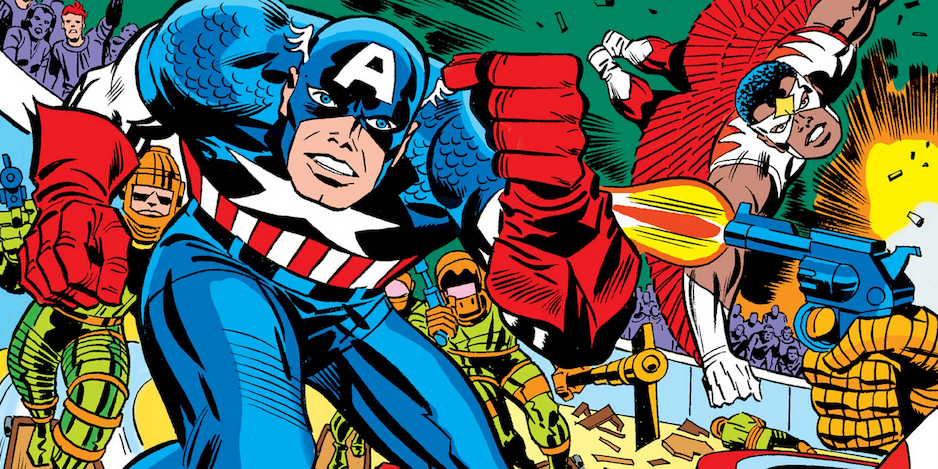
Kirby at Marvel in the ’70s
Frustrated that his accomplishments had been subsumed by the celebrity of Marvel editor/writer Stan Lee, Kirby jumped ship to DC at the end of the 1960s to launch a series of so-called “Fourth World” titles created by him: New Gods, Mister Miracle and Forever People (and absorbing Superman’s Pal Jimmy Olsen as well).
It was apparently Kirby’s intention all along to launch the series himself, then hand them off to other creative teams, as he had at Marvel with strips like The Incredible Hulk, The Avengers, Iron Man, Nick Fury: Agent of SHIELD, The X-Men, et al. Except at DC he’d be in the editorial chair.
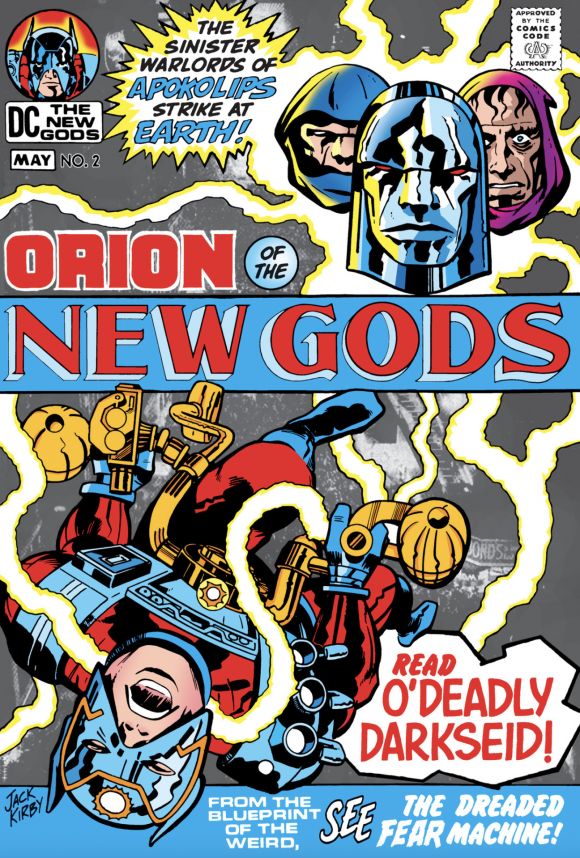
Unfortunately, the Fourth World books, while hardly bombs, were not the sales juggernauts DC was hoping for when they poached their biggest rival’s biggest star. And to Kirby’s supreme irritation, DC got way more excited about two titles they asked him to create outside his cosmic purview, Kamandi and The Demon. It turns out his publisher was not in fact interested in Kirby books not written or drawn by Jack Kirby, so he had to set aside New Gods and Forever People to work on those two instead. Soon, Mister Miracle bit the dust too, and Kirby ran out the rest of his DC contract doing books other than his beloved Fourth World.
It’s a bummer for Kirby, but his output in this period was characteristically spectacular, so we comics fans win either way.
Here are my TOP 13 highest recommendations from Kirby’s Post-Fourth World DC output — ranked:
—
13. Kamandi, the Last Boy on Earth #6: “Flower!” I will confess to have never really gotten into Kamandi, the most contemporaneously popular of all the King’s post-Marvel Age titles, running a whopping 40 issues. My reread for this column didn’t really change my opinion of it, either.
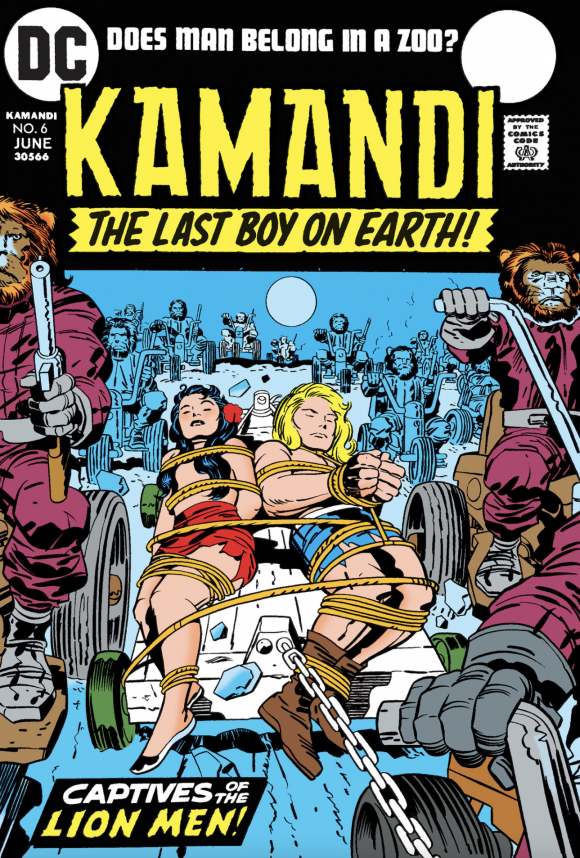
For one thing, it is the rare Kirby book to wear its influence so obviously on its sleeve, as a Planet of the Apes-and–All-the-Other-Animals-Too book. For another, Kamandi himself is a pretty blah lead with no real drive or motivation. He spends his time wandering a post-apocalyptic North America nowhere near as cool as the Kirby-designed Thundarr the Barbarian and most of the repetitive plots involve him getting captured by, then having to escape from, various uplifted species.
That said, Kirby I don’t love is better than 90 percent of other people’s comics.
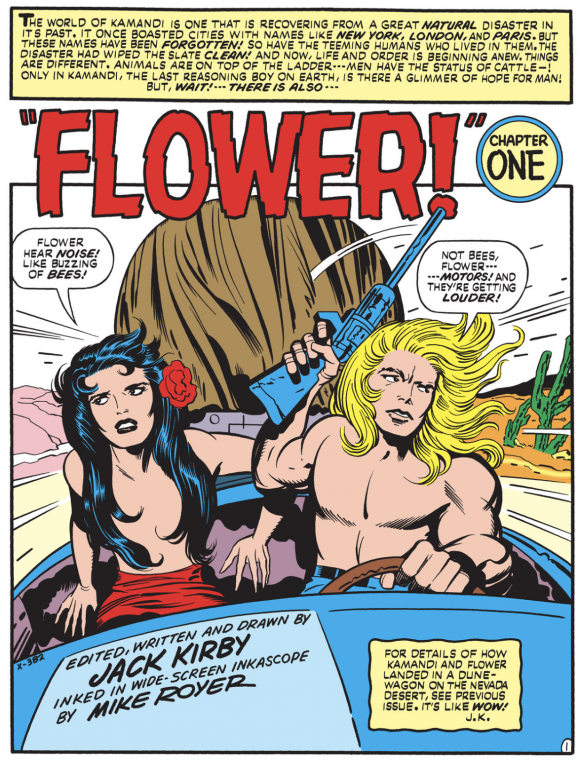
I cynically suspect part of the series’ success was Flower, Kamandi’s topless love interest, whose strategically-placed Comics Code-approved locks nevertheless inflamed the hormones of kids who’d otherwise be complaining he should get back with Marvel. She gets summarily dispatched in this issue, which is nevertheless a sweet story about her and Kamandi playing house in a wild human preserve run by lion do-gooders—but then weasel poachers crash the party.
Kirby must have realized he made a mistake in knocking her off, because he took the classic dodge of introducing Spirit, Flower’s identical twin sister, later in the series, though she doesn’t stick around long, either.
—
12. The Demon #3: “Reincarnators.” In speaking of the anxiety of influence, The Demon is one of the few Kirby titles he openly admitted to ripping off another strip—Hal Foster’s Prince Valiant, specifically a bit where the Arthurian knight pulled a goose’s guts over his face to impersonate a devil. (Etrigan’s weird ears are the goose’s webbed feet in the original.) Kirby jacked the look from Prince Valiant and the Camelot background, having Etrigan be harnessed to good in King Arthur times by Merlin. Here, he and Jason Blood, his immortal counterpart, battle a modern-day cult that transforms hapless people into their past lives to do their bidding for them.
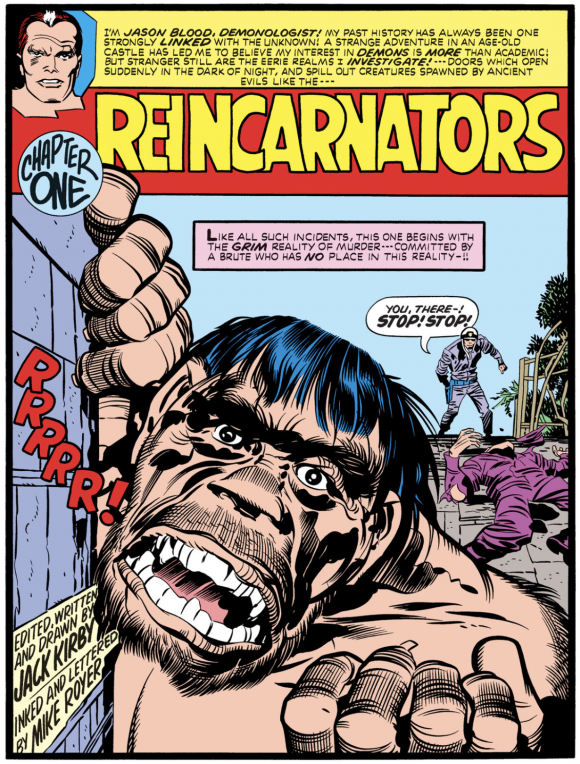
In the spirit of comics creators ripping each other off, I was so enamored with the high concept of this issue that I ripped it off for Resurrectionists, a creator-owned series I did for Dark Horse a few years back.
—
11. OMAC #2: “In the Era of the Super-Rich.” Oh, Kirby, you wacky guy! Boy, you sure needed Stan “The Man” to ground your wild concepts and excessive exclamation points! Like, take this nuttiness: In the near-future, the rich are a law unto the themselves? Where a “Mr. Big” can rent out an entire city and kick the citizens out, just for a birthday party? Which turns out just to be an elaborate trap to draw in OMAC and kill one guy just because he can’t handle a single dissenting voice from his own power? I mean, that’s completely preposterous! Who would think such a thing could ever happen in “the world outside your window?” That’s just…just…
Oof. I’m just gonna lie down for a while.
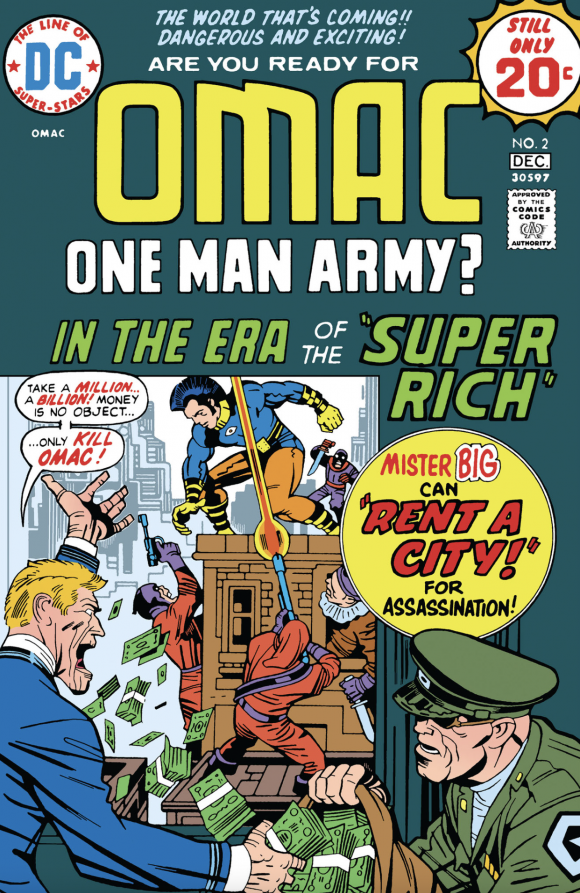
—
10. 1st Issue Special #5: “Manhunter.” This issue ranks on this list because of its utterly awesome and insane opening, in which the O.G. Manhunter battles a mask-obsessed assassin in his demented Burning Man cave. This revival of a Golden Age Simon & Kirby throwaway is a member of an ancient evil-hunting cult, or something, and passes his mantle on to public defender Mark Shaw. Like many a disgruntled comic book lawyer, he takes his own courtroom failures out on the faces of criminals as he (or she) pummels them into senselessness as a superhero. Like, I gather, a lot of these 1st Issue Specials (sorry, Dingbats of Danger Street, you didn’t make the cut), the issue concludes with Mark going off to whoop ass in a second part that never comes. In the bizarro way of mainstream of comics, this story is later concluded in, of all places, John Ostrander’s Suicide Squad.
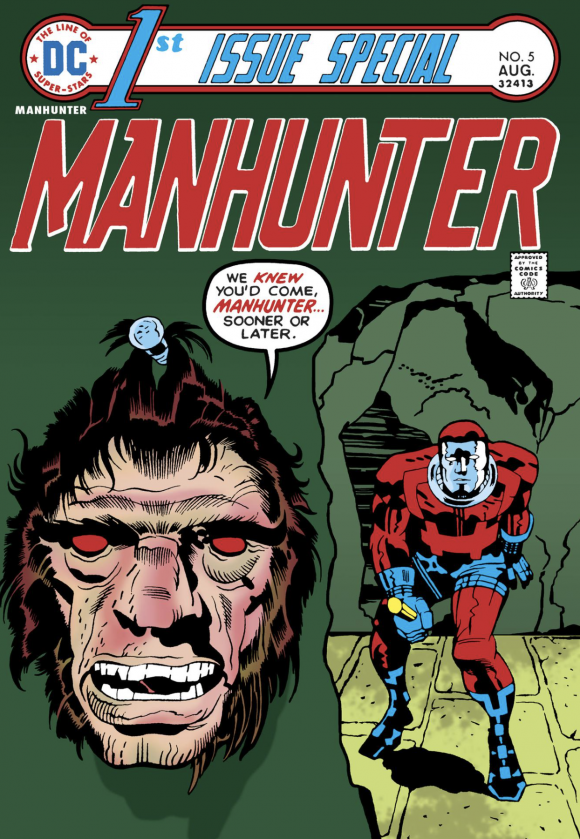
—
9. The Demon #15: “The One Who Vanished!” Kirby gushed great ideas like a ruptured sewer main, so rarely did he ever return to the same bad guy twice. But he clearly knew he had a winner in Klarion the Witch Boy, an interdimensional bad seed that first bedeviled Jason Blood (insisting on calling him “uncle” even though they’re not related) in #7. Here he returns to eat cake, dance with his disturbingly hot familiar, Teekl, and make evil duplicates of Uncle Jason and friends. Klarion has a justly higher profile in our era, thanks, I think, to a memorable turn in The New Batman Adventures (where Billy Zane was a surprisingly effective Blood/Etrigan).
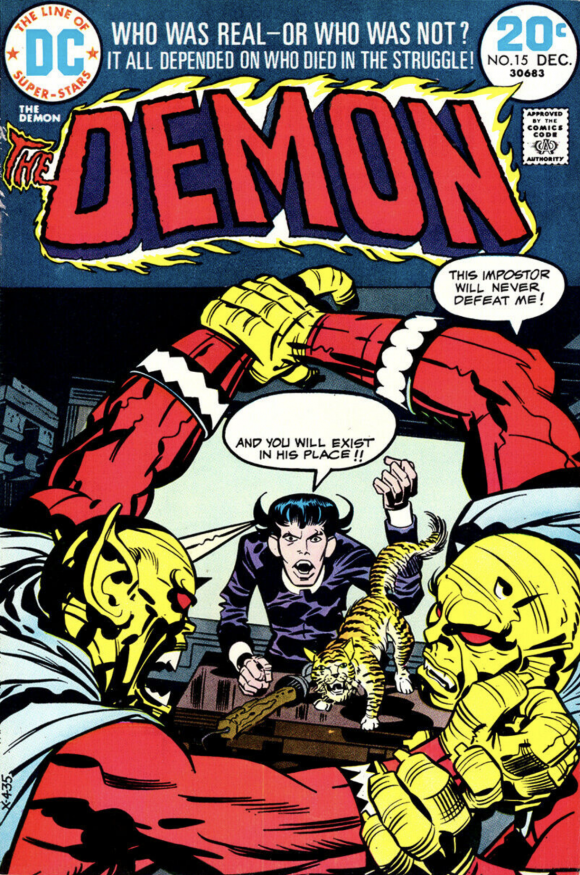
—
8. Our Fighting Forces #159: “Mile-a-Minute Jones!” “The Losers” is a unique strip in the Kirby canon in that I think it’s the only one—except maybe Green Arrow—that he was on for a lengthy stint that he had no hand in creating himself. This special unit is an “Avengers” team of random characters from other DC war books that Kirby didn’t create either. Still, he famously loved his own real-life World War II stories, and his run on the title is great fun. In this issue, he imagines a sequel to the 1936 Berlin Olympics in which Jesse Owens gets captured by the German runner he beat on the battlefields of France. Though this could be super-sappy, Kirby wisely plays it straight, with a thrilling rematch between the sprinters in a life-or-death dash through a minefield.
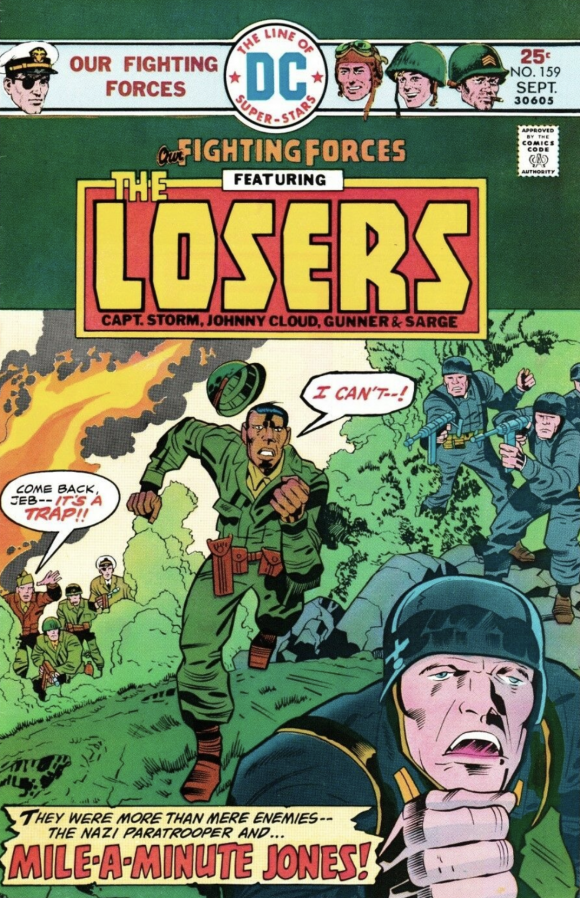
—
7. The Demon #6: “The Howler!” A lot of The Demon is Kirby riffing on old Universal horror movies, which he clearly loved—as later Etrigan foes the Phantom of the Sewers and Dr. Von (HEAVY SIGH) Evilstein can attest. But this one is the best, in which Jason Blood, traveling through Transylvania after a previous adventure, battles a Wolfman-like “Primal Entity.” On the flight back to Gotham, Blood meets the Howler’s human half, and, feeling kinship with him, tries to cure him—but with grim results.
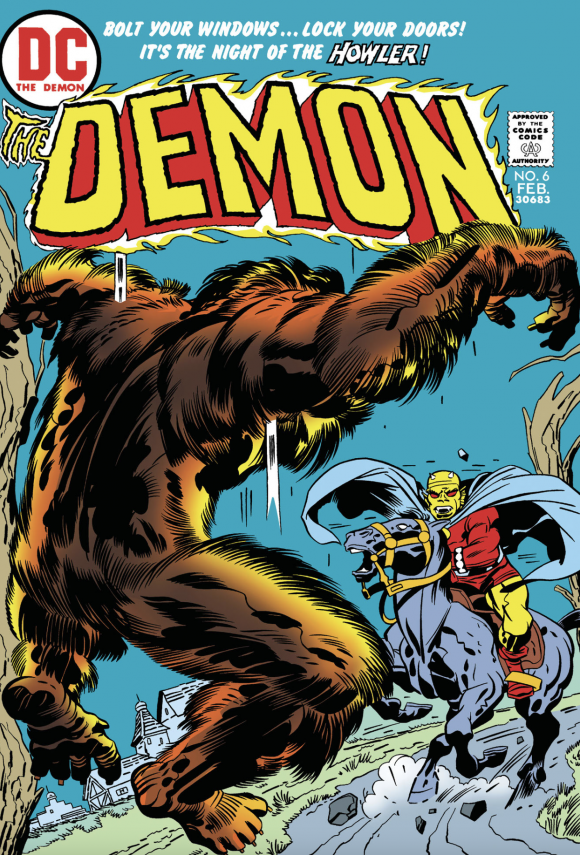
—
6-5. Kamandi, the Last Boy on Earth #22-23: “The Red Baron”/“Kamandi and Goliath!” “Dolphins Kept All Men in Tanks… One Man Kept All Dolphins in Fear!” might be the greatest above-the-logo hype type in comics history, IMHO. In this amazing two-parter, Kamandi and his friends are taken to the eye-popping underwater city of super-intelligent dolphins, where the (still-mostly-bestial) humans are paired as pets with dolphin mounts whom they ride and fight with like a reverse knight-and-white-horse (see, I told you it was amazing). They are at war with, yes, of course, killer whales with their own goon squad of human sidekicks. At first, Kamandi, as he often does throughout the series, resents being “adopted” by the young dolphin who’s taken a shine to him, until tragedy changes his mind…
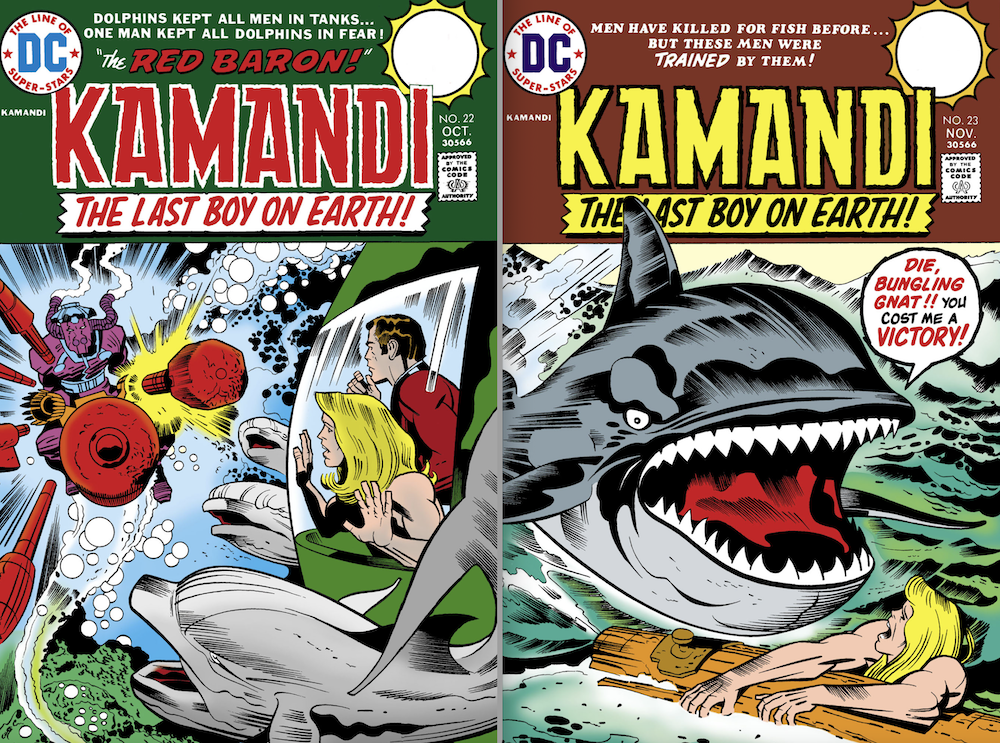
—
4. OMAC #4: “Busting of a Conqueror!” This series is the closest to straight up cyberpunk Kirby ever got. You’d think an SF fan like him was familiar with the work of Philip K. Dick, and in OMAC’s near future of all-powerful corporations, feckless national governments, and weird synthetic creatures, there’s more than a little hint of Do Androids Dream of Electric Sleep? Originally conceived of a future Captain America strip for Marvel, One-Man Army Corps apparently baffled fans and pros alike when it came out, and it lasted the shortest of any of Kirby’s DC ongoings (eight issues).
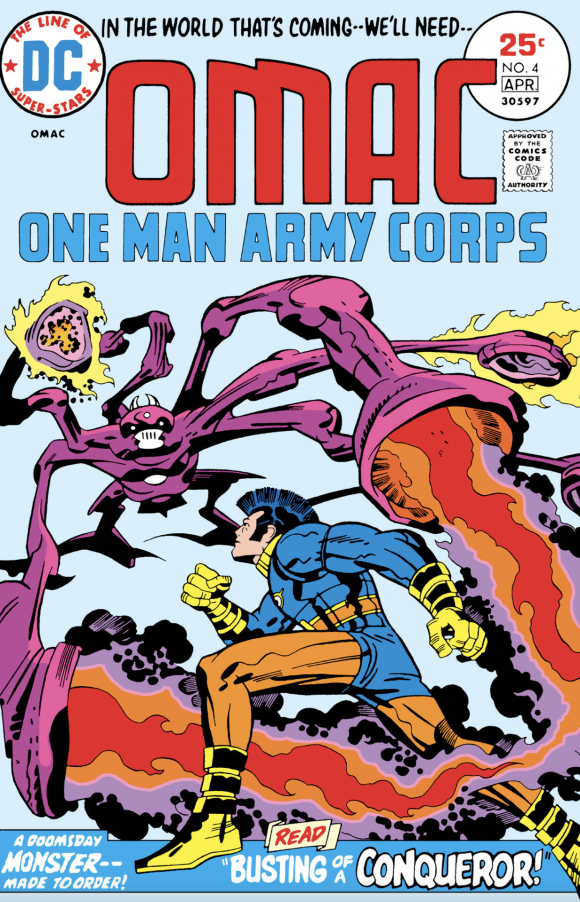
I’m baffled by their bafflement, but then in the 21st century, the idea that the world government is so small it can be drowned in a bathtub isn’t so far-fetched. OMAC’s designation—One-Man Army Corps—is literal. This buffed-up and Mohawked Steve Rogers (“Buddy Blank” here) and his satellite partner, Brother Eye, are literally the only peacekeeping force on Earth, so when he captures a genocidal dictator to be put on trial atop Mount Everest, OMAC is the only guy on hand to hold off the genetically engineered “Terror-Weapon” sent to bust the tyrant out. Thrilling, brain-bending comics—Kirby at his best.
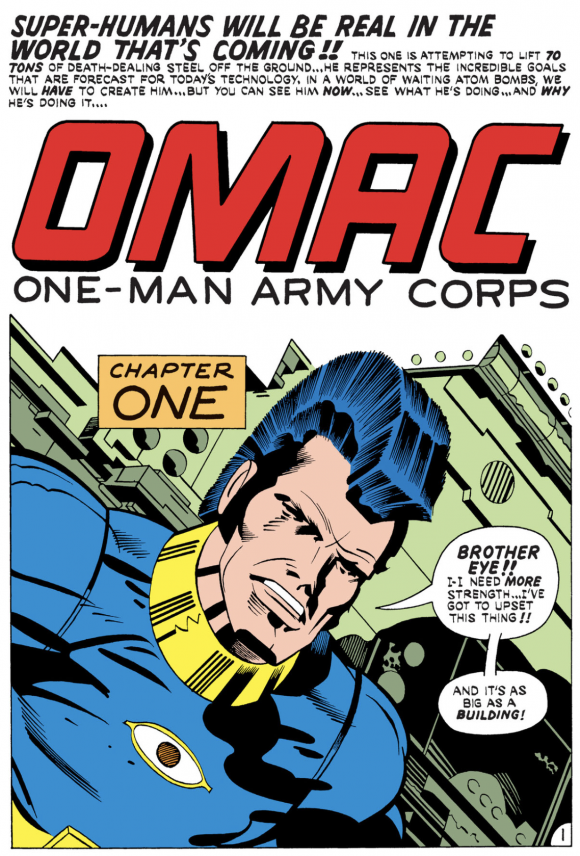
—
3. The Demon #4: “The Creature from the Beyond.” Etrigan is kind of Orion or Hulk cranked to 11, a completely unleashed creature of the id gleefully dishing out destruction on his evil foes and generally unnerving everyone around him (or, at the very least, making them glad the Demon is on their side).

But rarely is his comic very scary—not a mood we associate with Kirby, though don’t forget he and Joe Simon did Black Magic, the best of the bloodless Tales From the Crypt knockoffs of the 1950s. Kirby does his best Junji Ito here, though, with the memorable villain of Kamara, an adorable monkey-like creature who transforms into his victim’s worst fears. It’s not the most original concept, but Kirby does it with such effective restraint that Kamara’s wake of death in pursuit of Jason Blood (targeted by enemies of Merlin that summoned the beastie) is gripping and disturbing.
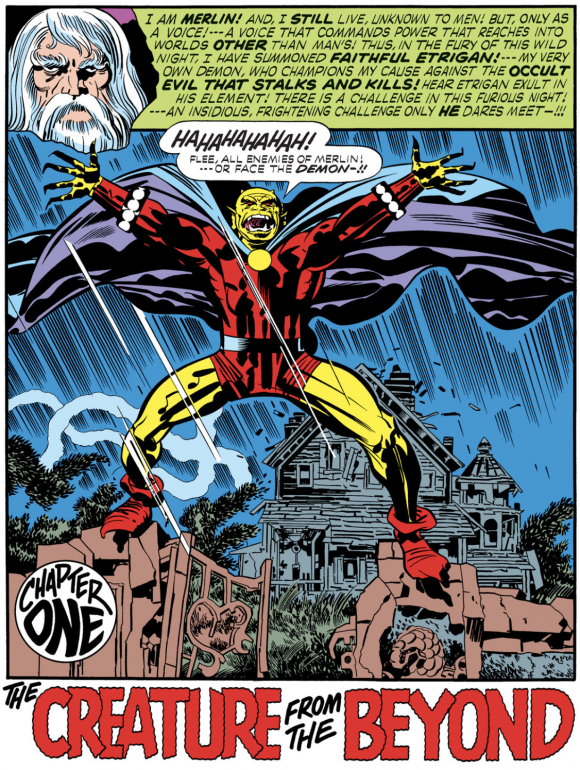
Game knows game: Alan Moore brought Kamara back to battle Etrigan once more in one of the best of arcs of his, Bissette and Totleben’s Saga of the Swamp Thing.
—
2. Kamandi, the Last Boy on Earth #29: “Mighty One!” Kirby was of the first wave of comics creators who grew up before comics were a thing—his generation all wanted to be comic strip artists. So he had no real affinity for the “superhero universes” owned by either of the companies he helped build, and avoided adding other people’s characters to his own titles whenever possible. (Famously, when Marvel editors forced him to add the Hulk to Eternals he did so in the form of a Hulk robot built by idiot comics fans.)
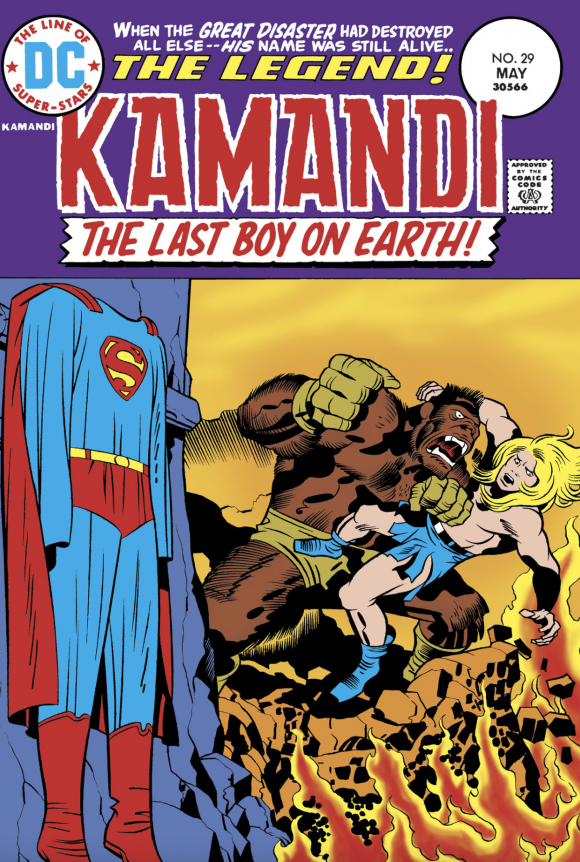
This is his best effort at doing something “in-universe” in the traditional sense: Kamandi and his mutant pal Ben Boxer stumble across a tribe of gorillas who worship You-Know-Who, and have even etched out his origin as a “comic” on a stone wall. The gorillas immediately assume the tall, human-looking Ben is The Mighty One returned, but it is the Last Boy on Earth who demands to fight for the right to wear the red, yellow and blue. In the end, however, Kamandi can’t claim it—because he believes its rightful owner is out there somewhere, poised for a return…!
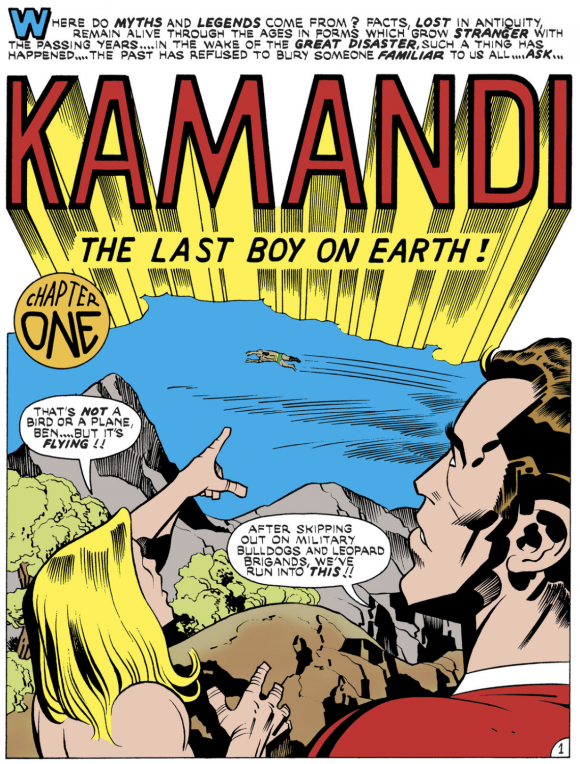
—
1. Our Fighting Forces #152: “A Small Place in Hell!” This is an all-timer for Kirby, which I’d put right up there with “The Galactus Trilogy” and “The Pact”, and perhaps, only third to those two stories. Why? While it does not have any of the King’s signature cosmic superheroics, it does have Kirby using all of his considerable skill in action and pacing to give us Black Hawk Down on paper, as our heroes are trapped in an abandoned French town surrounded on all sides by a relentless Nazi attack.
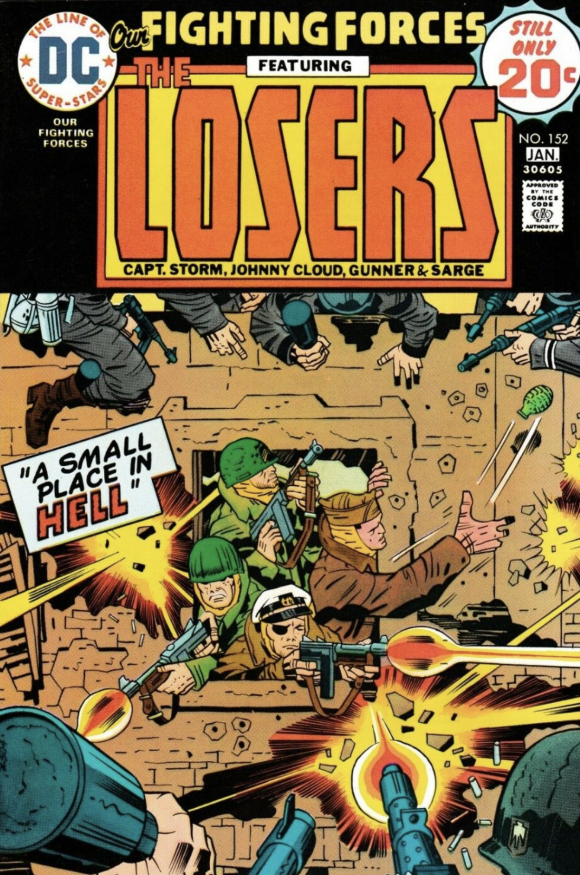
This is where Kirby himself spent his own wartime service, and he tosses his sci-fi high-concepts and colorful costumes out the window for a story rendered simple through familiarity. (General Patton, whom Kirby served under, and had a well-known distaste for, as dramatized in our own King Kirby, makes an appearance at the end of the story… once the fighting is over, of course.) You feel the desperation, every explosion, every gunfight, every struggle with a knife. At the end of it, the exhaustion and suffering Kirby draws on the surviving Losers’ faces makes you wonder if they won at all. Superlative comics from one of the medium’s true masters.
—
MORE
— The TOP 13 Issues of JACK KIRBY’s 1970s Return to MARVEL — RANKED. Click here.
— Nothing Will Stop Us, Readers! 50 Years of JACK KIRBY’s FOURTH WORLD. Click here.
—
13th Dimension columnist Fred Van Lente is a comics writer, historian and playwright, who has chronicled the relationship between Stan Lee and Jack Kirby in the play-turned-podcast King Kirby, written with Fred’s wife Crystal Skillman.

August 28, 2021
Happy birthday to the late Mr. Kirby.
September 29, 2021
An excellent no. 1 choice, I just started Kirby’s Losers run recently and was floored by that second issue. I think it serves as a strong example of Kirby as a writer too, there’s so much understatement in the closing scene, such as the final line spoken by Cloud. People who think Kirby was never subtle or couldn’t be subtle only look at his most bombastic art or cherry pick some of the more awkward dialogue that he’s become notorious for, with the strong implication being that he “needed” somebody else to script his comics. They apparently haven’t read this issue, and if they have, I don’t know what they’re missing.